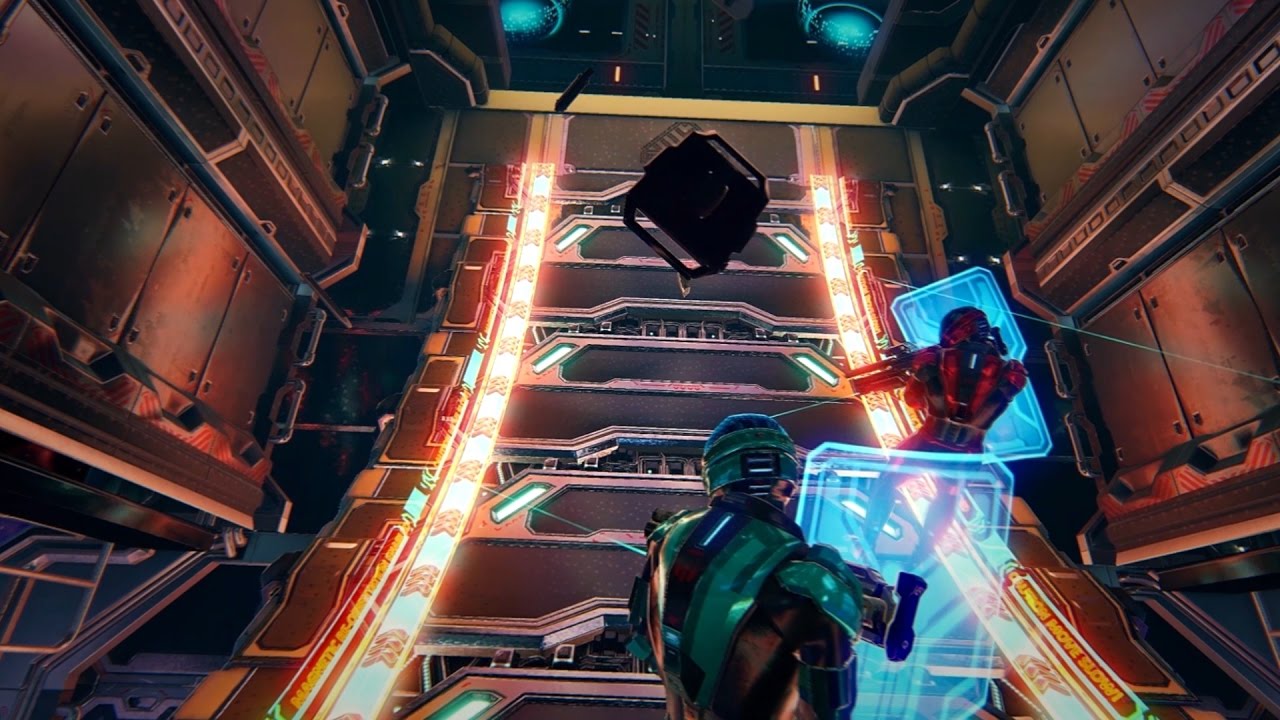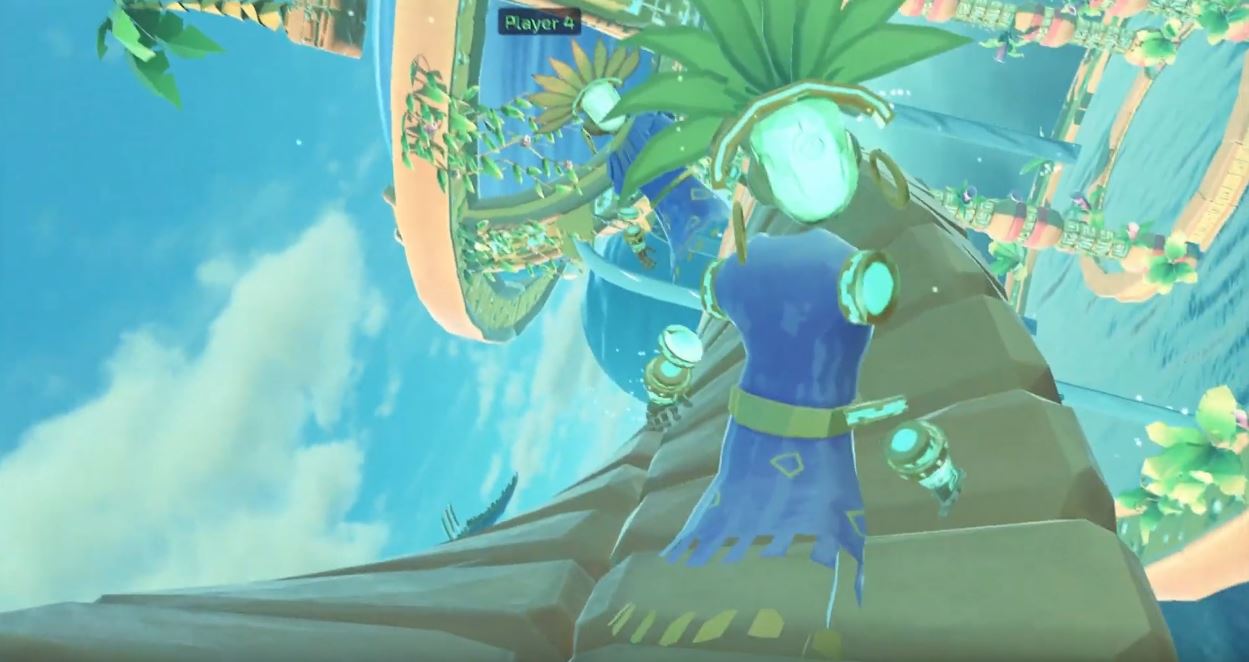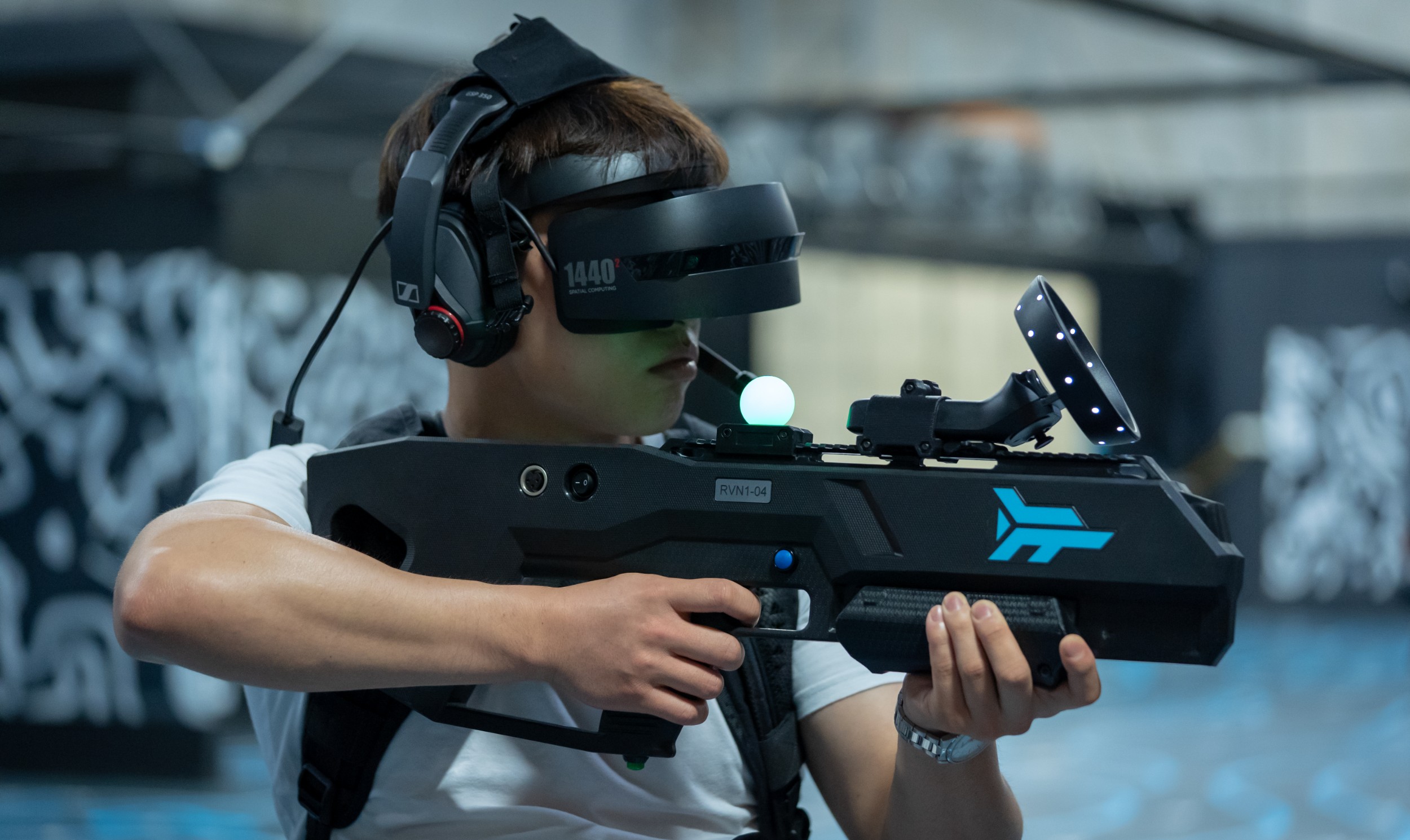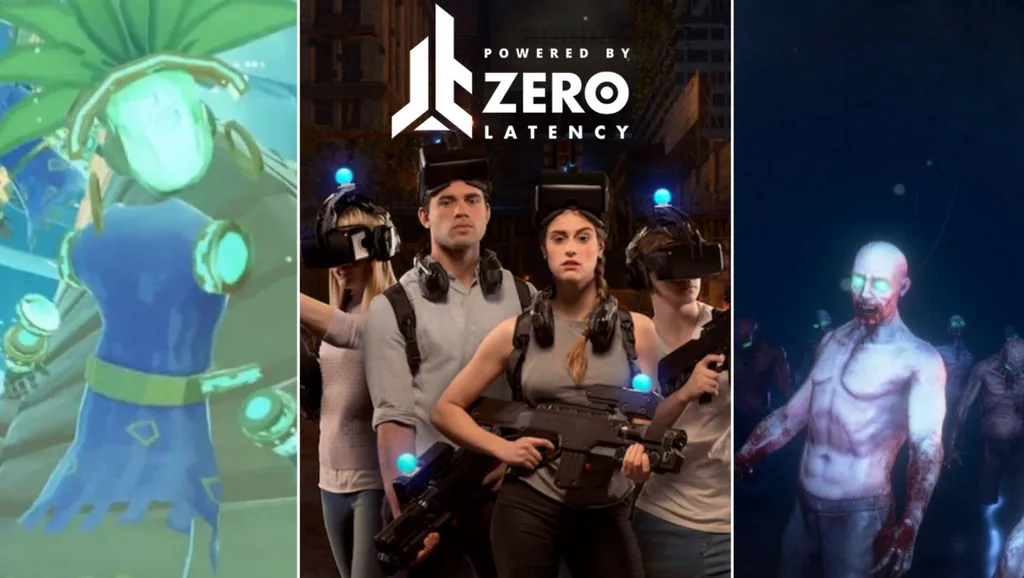Recently I, along with UploadVR’s Digital Marketing Manager, Tatjana Vejnovic, got to try out two experiences at Zero Latency’s Melbourne location. Here are my impressions!
We’ve covered some of Zero Latency’s experiences before, but for those who are unfamiliar, the concept is pretty simple. Zero Latency allows you to take part in wireless co-op VR experiences with up to 8 players, all of which take place in a large open plan warehouse, allowing you to move somewhat freely within the game world without worrying about bumping into obstacles or walls.
All of Zero Latency’s locations use custom VR headsets, along with a proprietary custom assault gun for each player, for games which require one. They’re even now offering a new PvP experience, which we previously covered, and the Melbourne Zero Latency staff mentioned how they had just hosted their first PvP esports tournament the week before.
While at Zero Latency, Tatjana and I played two different sessions. The first was Zombie Outbreak, a fairly stock-standard VR co-op zombie shooter experience, with the added gimmick of free roaming in the large space. It features a well-worn narrative – a city has been infected by zombies, and you have to clear them out of the city. There are few gun upgrades here and there, but your standard gun can switch between being an assault rifle and a shotgun. The whole experience takes about 45 minutes and you move through various different scenes and set pieces until you reach the end.
The second session was split into two games, the first of which, Engineerium, was a puzzle-game with no gun prop, but lots of walking and exploring. You and your teammates walk through a trippy environment that makes you feel as if you’re walking parallel to the ground, sometimes upside down, and even in the opposite orientation to your peers as you solve basic puzzles over roughly 20 minutes.
The final part of session two featured a game called Singularity that was a sci-fi space shooter, similar in gameplay concept to Zombie Outbreak, but shorter in length at around only 25 minutes. It sees you and your team fight off hordes of robots on a spaceship, with a variety of different guns and more closed in corridors and spaces that see you move through the spaceship until you get to a final boss battle.
Both sessions took place in the exact same physical space, with the same hardware, however they could not have been more different. The first session, with Zombie Outbreak, was a frankly woeful experience, and left me extremely skeptical about Zero Latency as a whole. The session was constantly interrupted and paused for multiple reasons – someone would get too close to a wall, or sometimes the game supervisor would have to explain what was going on, sometimes two people would be too close together, causing the game to pause to avoid a collision. The system and gameplay became very frustrating, very quickly.
I wasn’t feeling that excited about heading into the second session. However, it was completely different. In both Engineerium and Singularity, we were barely interrupted, spare a few times here and there. The flow of the gameplay was much smoother and the whole experience felt much more polished. Our game supervisor barely needed to intervene in either game, and much less overall than in Zombie Outbreak. The session could not have been more different to the first – it was much more enjoyable.
I walked out of Zero Latency feeling quite confused. It was the same physical space, the same constraints, the same technology, and yet the two sessions felt like they were run by two different companies. The first session I would never willingly play again, whereas the second sessions was an experience I would willingly show to others as an introduction to the vast possibilities and immersion of VR.
On my way home, I realized why the difference was so stark – it comes down to gameplay and level design. Zombie Outbreak was designed with poor systems overall – it didn’t use the physical space well, it left newcomers confused, and it’s level layout meant that people often ended up bunched up and bumping into each other and the game’s boundaries. Singularity, which at its core is the same 8 person co-op shooter concept as Zombie Outbreak, felt much more thoughtfully design. Its levels provided direction and areas for each of the 8 players to explore, without getting into each other’s way too frequently.
After the second session, it struck me that Engineerium and Singularity had distinct, fun art-styles. On the other hand, Zombie Outbreak had a really muted colour palette with no defined style at all. It was trying to look realistic, but mostly just looked like any shooter game from the mid 2000s.
While this certainly had an impact on the games’ aesthetical appeal, it also affect the gameplay and how the groups approached the levels as well. With so many brown surfaces and dark colours, Zombie Outbreak’s aesthetic design never gave you a good indicator of where to go or how to move through the space. In fact, Zombie Outbreak takes advantage of the warehouse’s open plan space in the worst way possible – most of its environments are just a wide open street or large room you can walk around. This hypothetically sounds great, but in reality it means that all 8 players are rarely directed anywhere in a clear manner, so everyone just gravitates to the edges of the game area boundaries, where enemies spawn. People tended to just bunch up in groups.
In our session, this lead to what seemed like endless game pauses – due to person-to-person collisions or people standing too close to walls – and lots of directions from the game’s supervision via our headsets. Our supervisor would often had to direct stragglers or confused players in the right direction, as the game’s art style and level layout doesn’t give much clear assistance.
On the flip side, Singularity’s levels understand that just because you have a big open warehouse to play in, you shouldn’t necessarily design your game to take advantage of that in a literal way. They’ve taken the space and made virtual walls, corridors and small rooms. It’s not just a big open space with no barriers, it’s a proper spaceship that feels closed in and almost claustrophobic. However, ironically this means you end up exploring and walking around more than you do in the large, empty space in Zombie Outbreak. You always have a good idea of where to go, as the corridors direct you to the right area, and it gives players frequent opportunities to break off into groups. With less players bunched up in the same spaces, you have less collisions. The superior level design also meant the supervisor doesn’t have to chime in with advice very often, because the layout of the ship naturally directs you without assistance. The difference this makes to the overall experience is literally game-changing.
Singularity felt like a game that was designed to take advantage of a large open space in a way that facilitates maximum immersion. Zombie Outbreak felt like it was designed simply to showcase the vast dimensions of the warehouse floor plan, which in turn makes the experience feel less tailored and much more frustrating.

Singularity’s design also means that you lose track of your physical position in the warehouse itself, due to its turning corridors and clever design. You can never quite tell where you’re standing in the physical warehouse, compared to where you started. In Zombie Outbreak, the levels generally always resembled the shape of the warehouse’s play area, so I was always vaguely aware of where I was physically in the real world, which feels much less immersive.
The puzzle game, Engineerium, is on a whole different level in this regard. The game is set on floating blocks that turn, move and rotate to completely separate your group and completely immerse you until you have no idea where you are in the physical space. You can’t even begin to think about where you are in the physical space, because the game has played so many visual and design tricks on your mind that make it near impossible to contemplate.
Without spoiling too much, in some parts of Engineerium you’ll look up and see a fellow player standing upside down above you, or standing perpendicular to you on a platform angled at 90 degrees. While you know that everyone is still standing flat in the physical game space, it’s a miracle of design that this effect can be achieved while ensuring no one bumps into each other in real life. It left me truly puzzled and amazed – it’s a dazzling effect and a great use of the physical space.
While Engineerium doesn’t use the gun props, the usage of the physical gun prop in Singularity and Zombie Outbreak were implemented quite differently as well. The gun itself was better represented in Singularity than it was in Zombie Outbreak – in the former, the gun model in-game matched the physical prop quite well, and even showed you the physical buttons on the in-game model, so they were easier to locate while playing. The Zombie Outbreak in-game model didn’t fully match the physical gun prop, and the buttons weren’t represented on the game’s model. This meant I often had to fiddle with the physical prop to find the buttons, as you couldn’t locate them by looking at the in-game model. It was a minor inconvenience, but another way the design of one game helped create a much better experience overall compared to the other.

Leaving Zero Latency, I came away with a new perspective. Without knowing both sessions were run by Zero Latency at the Melbourne warehouse, I would have said the two sessions were run by different companies and not affiliated in any way. Singularity and Engineerium felt like experiences that took the potential that the large warehouse space offered, and used it in a way that immerses you and surprises you with minimal interruptions. On the other hand, Zombie Outbreak simply felt like you had been plonked in a generic zombie VR game and the designers had drawn a large Oculus-style guardian barrier around the warehouse floor, leaving you to contend for space with the other players, with no real direction.
It just goes to show the degree to which game design can affect a VR experience. You can have the same physical space with the same hardware, but if you haven’t put thought into a game’s design, it can quickly fall flat. To some who are new or inexperienced, VR technology can still feel like a gimmick or something they’ve never experienced. In those situations, developers can often get away with sub-par game design, as the focus is on the technology. However, as the technology becomes more mainstream, this is quickly changing.

VR developers need to make sure that their level design, art style and gameplay are developing at a pace that matches the expectations of consumers that are becoming increasingly used to VR technology. Zero Latency is the perfect example of both the good and bad ends of that spectrum.

























